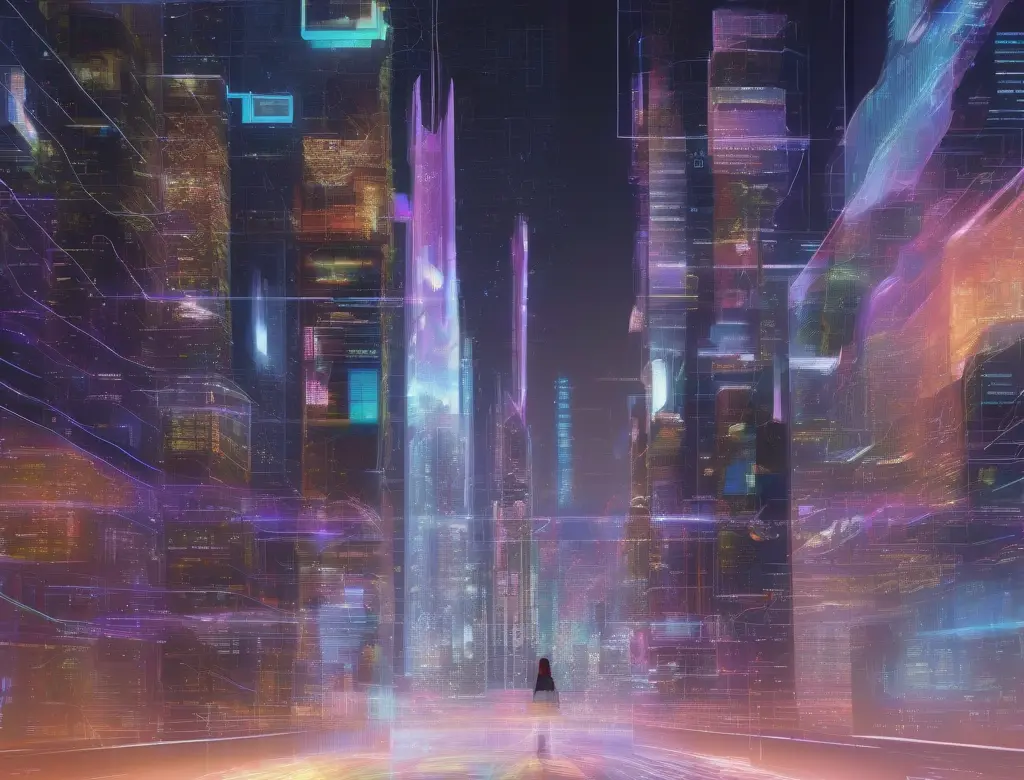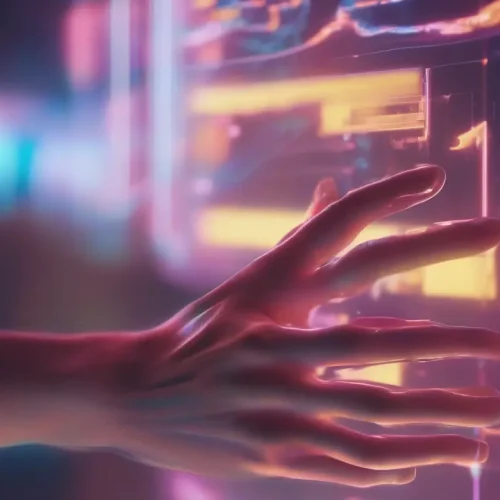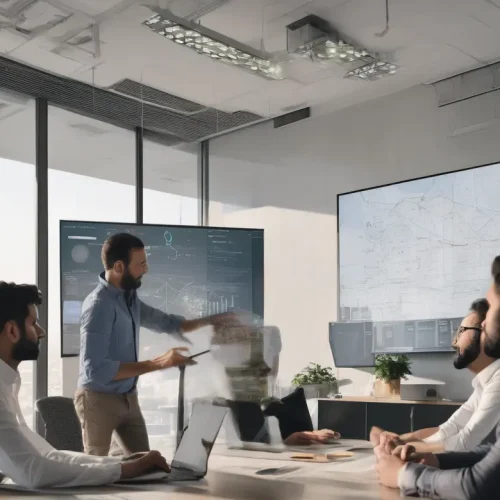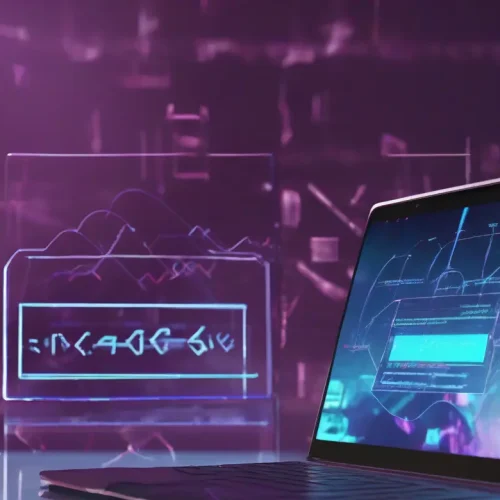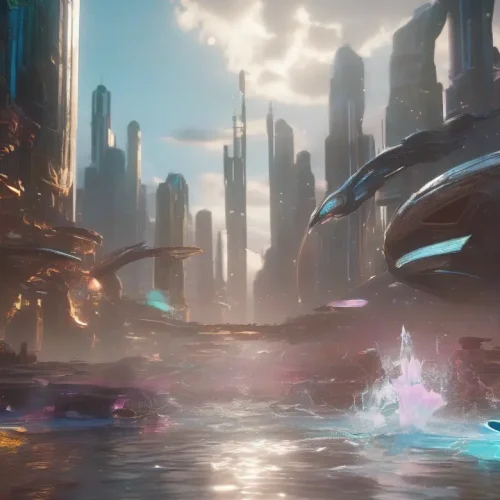Comprehensive Introduction to Sora 2 AI: A Revolution in Text-to-Video Generation
In today’s fast-paced technological world, Artificial Intelligence (AI) is evolving at a breakneck speed, with new tools emerging daily that push the boundaries of creativity and possibility. Amidst this, OpenAI, already globally renowned for language models like GPT and image generation tools such as DALL-E, has now taken a significant and revolutionary step in text-to-video generation with the introduction of Sora 2 AI. Sora 2 is not just an impressive technical advancement; it has the potential to fundamentally change how video content is produced, opening a new gateway to boundless creativity.
Imagine being able to create a complex cinematic scene, an engaging educational clip, or even a complete narrative video, simply by writing a few descriptive sentences. This is precisely what Sora 2 promises. This advanced model is capable of producing exceptionally high-quality, realistic, and detailed videos from text prompts alone. But Sora 2’s capabilities extend beyond merely generating moving images; this tool can simultaneously produce appropriate audio for the scene, including dialogue, music, and sound effects, offering a truly comprehensive and immersive experience.
This article provides a comprehensive introduction to Sora 2 AI. We will explore its key capabilities, underlying technologies, innovative features like Cameo, its social iOS application, its impact on various industries, and its standing in competition with other AI video generation models. Our aim is to offer a complete and in-depth perspective that is both useful and informative for beginners and experts alike in this field.
What is Sora 2 and How Does It Work?
Sora 2 AI can be defined as an advanced video creation engine developed based on Diffusion Models. At its functional core, Sora 2 learns the inverse process of adding noise to data, enabling it to generate fresh, coherent videos from a completely random space, aligned with the user’s text prompts. This process begins with the gradual refinement of noise and continues step-by-step until it reaches the final output, which matches the user’s creative vision.
One of the most crucial concepts in the functioning of Sora 2 AI is “Temporal Consistency.” This vital capability allows the model to continuously maintain the identity and characteristics of objects, characters, and environments throughout a video. In other words, elements do not suddenly change shape, disappear, or exhibit inconsistent behaviors across different frames. This issue was a major challenge for previous generations of AI models, which Sora 2 has dramatically resolved. This feature makes the generated videos appear much more natural and believable, as if directed by a real filmmaker.
Furthermore, Sora 2 possesses a deep understanding of the physical world. This AI is capable of not only creating scenes based on textual descriptions but also simulating how objects and characters interact with their surroundings. This includes understanding the laws of physics, light reflection, shadows, textures, and even emotions. For instance, if you ask Sora 2 to create a video of a coffee cup falling onto a table, the AI will not only accurately display the cup but will simulate its breakage and the spilling of liquid with high realism.
Key Capabilities and Innovative Features of Sora 2 AI
Sora 2 AI offers a set of impressive capabilities that distinguish it from similar tools. These features allow users unprecedented control over their video output and enable them to bring their creative ideas to life with unparalleled precision.
- Text-to-Video Generation: This is Sora 2’s primary feature. Users can produce videos of varying lengths and styles by entering precise and descriptive text prompts. From fantastical and surreal scenes to realistic simulations of daily life, everything is within reach.
- Synchronized Audio Generation: As mentioned, Sora 2 doesn’t just stop at image generation. This model can intelligently produce appropriate audio for each scene. This includes dialogue matching character lip movements, a soundtrack harmonious with the video’s atmosphere, and realistic sound effects like footsteps, wind, or rain. This capability significantly enhances the realism and appeal of the output videos.
- Precise Control Over Motion and Time: In the new version of Sora 2 AI, the user effectively acts as the director. The model provides highly precise control over camera movements (such as zoom, pan, rotation), the speed of events (like slow-motion or fast-motion), and an even deeper understanding of light, space, and depth of field. A scene can be created with slow, cinematic movement or with a fast, energetic rhythm. This level of control transforms Sora 2 from a random video generator into a powerful tool for intelligent direction, capable of executing the user’s precise creative vision.
- Cameo Feature: One of Sora 2’s most innovative features is Cameo. This allows users to place a realistic digital version of their face and voice into videos. With a short video and audio recording of oneself within the app, Sora 2 can place you into any Sora-generated scene with remarkable fidelity. This feature is highly practical for creating personalized, educational, or even promotional content.
- Injection of Real-World Elements: Sora 2 can directly inject real-world elements into its videos. For example, by observing a video of one of OpenAI’s team members, the model was able to place them into any Sora-generated environment with an accurate portrayal of their appearance and voice. This capability is very general and works for any human, animal, or object.
Sora Social App and Access Methods
To complete the user experience of Sora 2 AI, OpenAI has launched a social iOS application simply called “Sora.” This app provides a platform for users to create, edit, share, and even remix each other’s generated videos. The app offers a customizable feed where users can discover new videos and interact with the Sora community.
The Cameo feature is also currently primarily available through this app. Users can create a digital avatar of themselves using their iPhone and place it into various videos. This social approach offers vast potential for sharing creations and drawing inspiration from one another.
Currently, access to Sora 2 AI is available through invitation codes or via the iOS application. OpenAI often provides access gradually and in a controlled manner during the initial release phases of its advanced products to gather feedback and improve the model. To receive an invitation code, one typically needs to register on OpenAI’s waiting list or follow their official channels.
Impact of Sora 2 AI on Various Industries and the Future of Content Creation
The advent of Sora 2 AI in the technology landscape heralds widespread changes across various industries. The potential of this tool to produce high-quality video content at a faster pace and lower cost can revolutionize many traditional processes.
- Film and Entertainment Industry: Filmmakers, animators, and content producers can use Sora 2 for pre-visualization, creating visual concepts, generating special effects, or even crafting entire scenes in a significantly shorter time. This can drastically reduce production costs and enable more creative experimentation.
- Marketing and Advertising: Brands and advertising agencies can rapidly produce engaging and personalized promotional videos for their campaigns. The Cameo feature can help brands easily incorporate recognized faces or even their customers into their advertising content.
- Education and E-learning: The creation of video educational content can become much easier. Instructors and content developers can produce explanatory videos, simulations, and step-by-step tutorials without the need for expensive equipment or large teams.
- Independent Content Creators and YouTubers: Ordinary individuals with access to Sora 2 AI can bring their video ideas to life without needing complex filming or editing skills. This democratization of video production tools can lead to the emergence of a new wave of individual creativity.
- Video Games: Game developers can use Sora 2 to more quickly generate cutscenes, background animations, or even create dynamic and interactive worlds within their games.
However, like any powerful technology, Sora 2 AI also brings challenges. Issues related to ethics, copyright, distinguishing real videos from AI-generated ones, and the impact on the job market are among the concerns that need to be addressed. OpenAI has emphasized that its mission is for humanity to benefit from these models as they are developed, and it expects Sora to bring much joy, creativity, and connection to the world.
Sora 2 vs. Competitors: A Battle in the AI Video Front
While Sora 2 AI from OpenAI has emerged as a powerful player in the text-to-video generation arena, competition in this field is fierce and intense. Other companies are also developing similar models, each with its unique features and strengths. One of Sora 2’s main competitors is Google’s Veo model. Veo also has the ability to produce high-quality, longer videos from text prompts, and Google has showcased impressive examples of it.
A precise comparison between Sora 2 and Veo 3 (or any other version of Veo) is currently difficult, as both are still in early stages of public access, and their full capabilities and limitations are not entirely known. However, based on available information and published demos, it appears that Sora 2 has taken a longer stride in “temporal consistency” and a “deeper understanding of physics and real-world interactions.” These two features allow Sora 2 to produce videos that appear more visually coherent and narratively logical.
Additionally, Sora 2’s emphasis on the Cameo feature and its social iOS app indicates OpenAI’s approach to transforming this tool into an interactive and user-centric platform. In contrast, Google might be more focused on enterprise applications or integration with its broader ecosystem.
This healthy competition promises further and faster advancements in the field of AI video generation. Both companies, with massive investments in research and development, are striving to provide tools that are not only efficient but also bring new capabilities for content creation. End-users will ultimately benefit from this competition, as they will gain access to more powerful and diverse tools.
Conclusion and Future Outlook
Sora 2 AI from OpenAI is undoubtedly one of the most exciting and impactful recent achievements in the field of artificial intelligence. Its ability to transform text into realistic and high-quality videos, coupled with advanced capabilities like temporal consistency, precise directorial control, synchronized audio generation, and the innovative Cameo feature, makes it an unparalleled tool for creatives, artists, marketers, and anyone looking to express their ideas through video.
Sora 2 not only democratizes the video content production process but can also inspire new methods of storytelling, education, and interaction. While challenges such as ethical considerations and workforce impact exist, the technology’s potential to enhance creativity and accelerate human progress is undeniable.
As OpenAI continues to develop and refine Sora 2 AI, we can expect even more advanced capabilities in the future. Future models are likely to produce longer videos, with greater detail, and with real-time editing capabilities. One thing is certain: the future of video production with AI is bright and full of potential, and Sora 2 is at the forefront of this revolution.
Now is the time to prepare ourselves for this new era. With Sora 2, the power to create video is in everyone’s hands. Are you ready to set your ideas in motion and create a new visual world?
Sources :
- Sora 2 AI: Create Amazing Videos! (Full Introduction)
- From Zero to Hundred with Sora 2 AI; Registration and Video Creation Guide
- Meet Sora 2; The Most Realistic AI These Days – Zoomit
- Finally tested Sora 2 | Full review and sample videos + …
- How to Make Video with Sora 2 AI | Free Invitation Code and Full Guide
- Sora 2 is here | OpenAI


